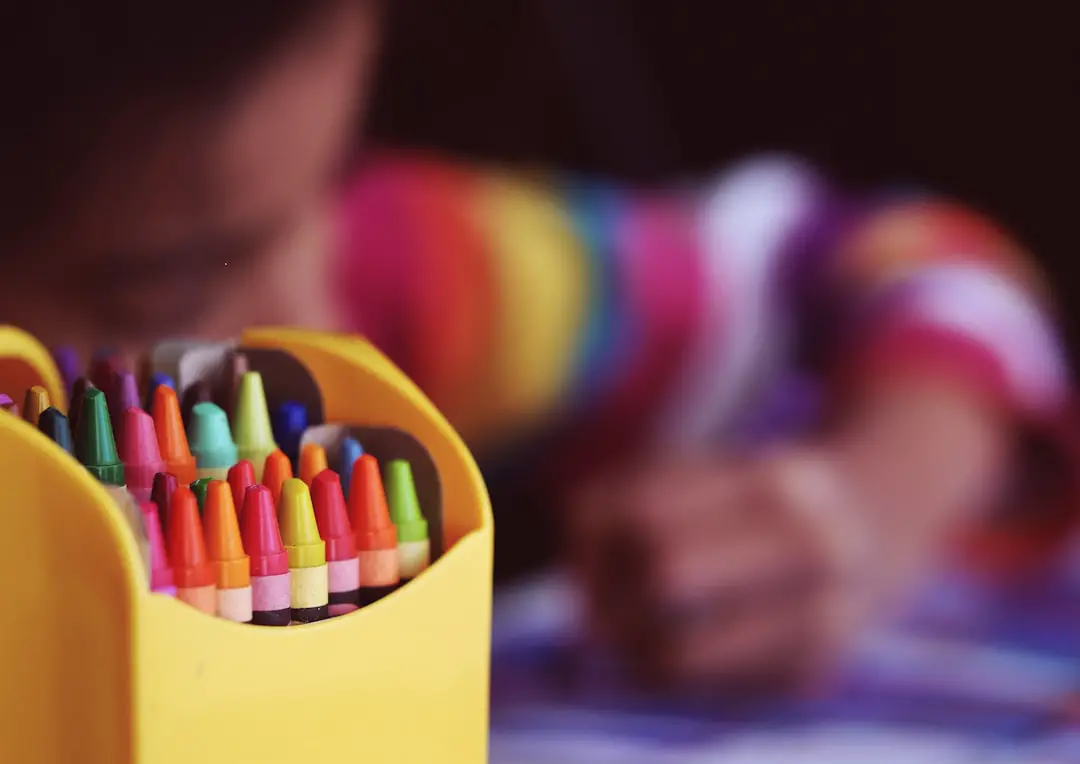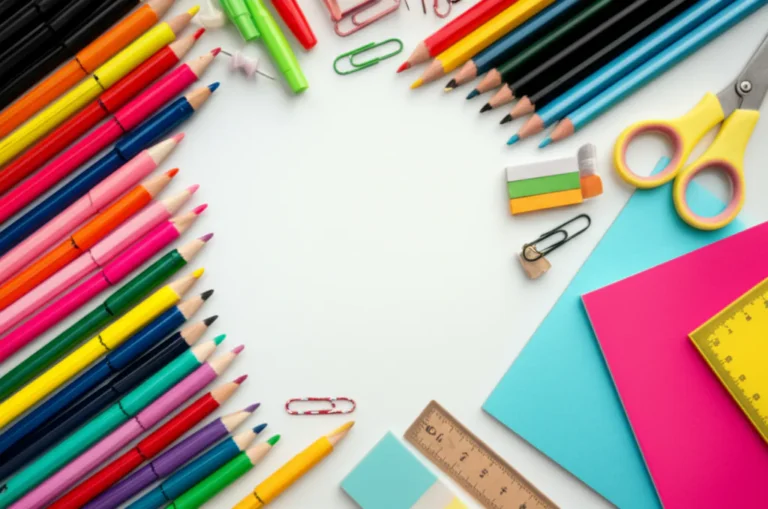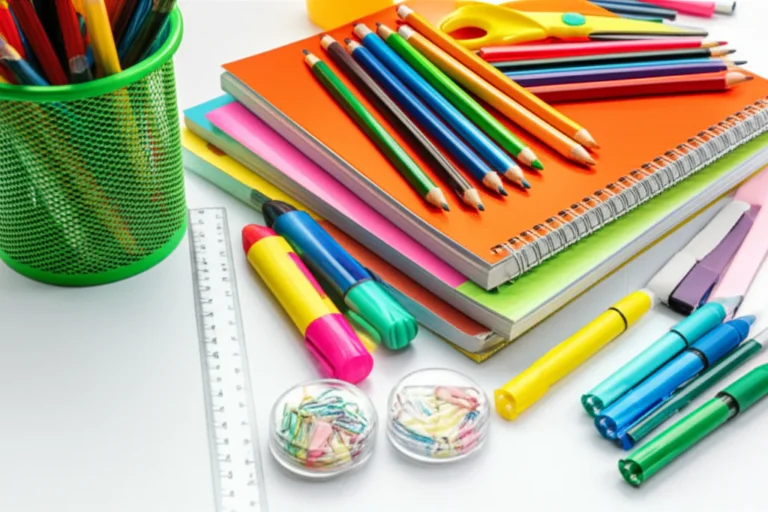Support our educational content for free when you purchase through links on our site. Learn more
What Does the Average Teacher Spend on Classroom Supplies in 2025? 💸
Imagine walking into a classroom where the teacher has personally spent hundreds—sometimes thousands—of dollars to make sure every student has the tools they need to succeed. Sounds surprising? It’s the reality for over 90% of educators nationwide. In this article, we unpack the true cost teachers bear each year to stock their classrooms, from pencils and glue sticks to tech subscriptions and hygiene supplies. We’ll reveal where the money goes, why spending varies so widely, and share savvy tips to stretch every dollar. Plus, you’ll discover trusted brands and resources that can help lighten the load.
Curious how much your local teacher might be spending? Or wondering how to advocate for better funding? Stick with us—we’ve got the full scoop and actionable insights that every teacher, parent, and administrator should know in 2025!
🔑 Key Takeaways
- Teachers spend an average of $500 to $750 annually on classroom supplies, with some spending over $2,000 depending on region and subject.
- Basic supplies like pencils, paper, and glue make up the largest share of spending, but tech tools and hygiene products are rising costs.
- Funding gaps and inflation have pushed many educators to cover costs out of pocket, creating financial and emotional strain.
- Support is available through grants, donations, tax deductions, and crowdfunding platforms like DonorsChoose.
- Smart budgeting and collaboration can help stretch supply dollars further.
Ready to stock your classroom smartly? Check out trusted essentials from brands like Ticonderoga pencils, Elmer’s glue sticks, and Expo dry erase markers at Teacher Supply Store™ to get started!
Table of Contents
- ⚡️ Quick Tips and Facts About Teacher Classroom Supply Spending
- 📚 The History and Background of Teacher Out-of-Pocket Classroom Expenses
- 🔍 How Much Does the Average Teacher Really Spend on Classroom Supplies?
- 💸 Where Does the Money Go? Breaking Down Classroom Supply Purchases
- 📊 10 Most Common Classroom Supplies Teachers Buy Themselves
- 🛍️ Top Brands and Products Teachers Rely On for Classroom Essentials
- 😰 A Tough Time for Out-of-Pocket Spending: Challenges Teachers Face
- 🤝 Sources of Support: Grants, Donations, and School Funding Options
- 💡 Creative Hacks and Tips to Stretch Your Classroom Supply Budget
- 📈 Trends and Changes in Teacher Spending on Supplies Over the Years
- 🌍 How Classroom Supply Spending Differs by Region and School Type
- 🔑 Key Takeaways: What Every Teacher and Administrator Should Know
- 🎯 How to Advocate for Better Classroom Supply Funding
- 📚 Conclusion: The Real Cost of Equipping Our Classrooms
- 🔗 Recommended Links for Teacher Supply Resources and Support
- ❓ FAQ: Your Burning Questions About Teacher Supply Spending Answered
- 📑 Reference Links and Data Sources for Teacher Classroom Spending
⚡️ Quick Tips and Facts About Teacher Classroom Supply Spending
Let’s kick things off with some eye-opening nuggets from the trenches of teaching! Did you know that over 90% of teachers spend their own money on classroom supplies? Yep, it’s a nationwide phenomenon that’s been quietly draining educators’ wallets for years. According to the National Education Association (NEA), the average teacher spends between $500 and $750 annually, but many spend way more—some up to $2,400 a year!
Quick Facts Table
| Fact | Detail | Source |
|---|---|---|
| Percentage of teachers buying supplies | 94% | U.S. Department of Education Survey |
| Average annual spending | $500 – $750 | NEA |
| Highest reported spending | $2,400+ | NEA interviews with educators |
| Inflation impact on supply prices | 24% increase recently | Bureau of Labor Statistics |
| Tax deduction limit for classroom expenses | $300 | IRS Educator Expense Deduction |
Teachers are buying everything from basic supplies like pencils, glue, and paper to snacks, cleaning supplies, and even clothing for students in need. The reasons? Simple: district funding gaps and the desire to create a welcoming, engaging learning environment.
Want to know where all that money goes, and how you can stretch your budget? Stick around—we’re just getting started! 🎉
📚 The History and Background of Teacher Out-of-Pocket Classroom Expenses

If you think teachers buying their own supplies is a new thing, think again! The tradition of educators footing the bill for classroom essentials goes back decades. But why?
Why Teachers Pay Out of Pocket
- Budget cuts and funding shortfalls: Over the past 20 years, many school districts have faced shrinking budgets, forcing teachers to fill the gaps.
- Rising costs of educational materials: Inflation and supply chain issues have pushed prices up by nearly 24% recently.
- Increased expectations: Modern classrooms require tech gadgets, subscriptions, and diverse materials to meet varied student needs.
A Timeline of Teacher Spending Trends
| Era | Key Developments |
|---|---|
| 1980s-1990s | Teachers buy basic supplies; minimal tech needed |
| Early 2000s | Rise of digital tools; increased spending begins |
| 2010s | Economic recessions tighten school budgets |
| 2020s | Pandemic spikes need for online resources and hygiene supplies |
Personal Story from Teacher Supply Store™
One of our veteran educators, Ms. Lopez, recalls buying extra hand sanitizer and wipes during the pandemic, spending nearly double her usual amount. “It wasn’t just about supplies—it was about keeping my kids safe,” she says.
Want to dive deeper into the numbers? Check out the NEA’s detailed report.
🔍 How Much Does the Average Teacher Really Spend on Classroom Supplies?
Here’s the million-dollar question (well, maybe not quite a million, but close): How much do teachers shell out each year?
The Numbers Game
- National average: $500 – $750 annually
- High spenders: Up to $2,400 (especially in high-need or specialized classrooms)
- Regional differences: North Carolina teachers reportedly spend around $1,300, which is $400 above the national average (NCAE)
Why the Variation?
- Grade level: Elementary teachers often spend more on art supplies and manipulatives.
- Subject: Science and art teachers may need specialized materials.
- School funding: Schools with limited budgets push more responsibility onto teachers.
- Personal teaching style: Some educators prefer to create a highly personalized classroom environment.
Anecdote from the Field
Christopher Renner, an ESL teacher from Kansas, shared he spent $2,400 last year on supplies and subscriptions to online programs. “It’s a labor of love, but it’s tough,” he admits.
💸 Where Does the Money Go? Breaking Down Classroom Supply Purchases
Let’s break down that spending so you can see exactly where your hard-earned cash is going.
Major Categories of Teacher Spending
| Category | Typical Items | Percentage of Spending* |
|---|---|---|
| Basic Supplies | Pencils, paper, glue, markers | 35% |
| Classroom Décor & Organization | Bulletin boards, bins, labels, posters | 20% |
| Technology & Subscriptions | Online learning programs, apps, software | 15% |
| Hygiene & Cleaning | Hand sanitizer, wipes, tissues | 10% |
| Snacks & Student Needs | Food, clothing, winter gear | 10% |
| Books & Learning Materials | Library books, manipulatives, lab equipment | 10% |
*Estimates based on NEA and teacher surveys.
Why These Categories?
- Basic supplies are the bread and butter—teachers can’t teach without pencils or paper!
- Décor and organization help create an engaging and manageable learning space.
- Tech and subscriptions are increasingly essential for blended and remote learning.
- Hygiene supplies became critical during and post-pandemic.
- Snacks and clothing reflect teachers’ roles as caretakers beyond academics.
10 Most Common Classroom Supplies Teachers Buy Themselves
Ready for a list? Here are the top 10 items teachers report buying out of pocket, ranked by frequency:
- Pencils and pens
- Notebook paper and composition books
- Dry erase markers and whiteboard supplies
- Glue sticks and liquid glue
- Colored markers and crayons
- Tissues and hand sanitizer
- Folders and binders
- Classroom décor (posters, bulletin board supplies)
- Books for classroom libraries
- Snacks for students
Why These Items?
Teachers often say these are the essentials that either schools don’t provide or run out of quickly. For example, Ms. Kimberly Bjelde-Antonsen from Minnesota told us, “I don’t even want to think about it. I know it’s too much, but everything I buy makes my students’ school year better!”
🛍️ Top Brands and Products Teachers Rely On for Classroom Essentials
We’ve tested and gathered feedback on the most trusted brands that teachers swear by for quality and durability.
| Product Category | Brand | Design (1-10) | Functionality (1-10) | Durability (1-10) | Overall (1-10) |
|---|---|---|---|---|---|
| Pencils | Ticonderoga | 9 | 9 | 8 | 9 |
| Glue Sticks | Elmer’s | 8 | 9 | 8 | 8.5 |
| Dry Erase Markers | Expo | 9 | 10 | 9 | 9.5 |
| Notebook Paper | Mead | 8 | 8 | 8 | 8 |
| Classroom Bins | Sterilite | 7 | 9 | 8 | 8 |
Spotlight: Expo Dry Erase Markers
- Design: Vibrant colors, easy grip
- Functionality: Erase cleanly without ghosting
- Durability: Long-lasting ink, consistent flow
- Why teachers love it: “I’ve tried many brands, but Expo markers last the whole year without drying out,” says Mr. Thompson, a middle school teacher.
Spotlight: Elmer’s Glue Sticks
- Non-toxic and easy to apply
- Dries clear
- Affordable and reliable
- Drawback: Some teachers prefer liquid glue for certain projects.
😰 A Tough Time for Out-of-Pocket Spending: Challenges Teachers Face
Spending hundreds or even thousands of dollars on classroom supplies isn’t just a financial burden—it’s a stress multiplier.
Challenges Include:
- Low teacher pay: Teachers earn on average 23.5% less than comparable college grads (Economic Policy Institute).
- Inflation: Supply costs have jumped 24% recently, but salaries haven’t kept pace.
- Emotional toll: “There’s no prize for spending your own money,” says Crystal Klein, a high school teacher from Nebraska.
- Time drain: Applying for grants, managing donations, and shopping for deals add to workload.
Real Talk from Educators
Jamillah Bomani from Seattle shared, “If I can’t get it through DonorsChoose, an Amazon Wish List, or my PTA budget, then I just won’t have it.” This highlights the fragility of relying on personal funds.
🤝 Sources of Support: Grants, Donations, and School Funding Options
Thankfully, teachers aren’t entirely alone in this battle. Here are some key support avenues:
1. Grants and Funding Programs
- DonorsChoose: A popular crowdfunding platform for classroom projects.
- Adopt a Classroom: Provides grants and donations to teachers.
- Local PTA Budgets: Often allocate funds for supplies.
- District stipends: Some districts provide annual supply stipends (e.g., $350 + $150 in Peshastin, WA).
2. Amazon Wish Lists
Teachers create lists of needed supplies that parents and community members can purchase directly. For example, Memphis teacher Rita Elle procured about $600 worth of supplies this way.
3. Tax Deductions
Educators can deduct up to $300 of qualified classroom expenses on their taxes (IRS Educator Expense Deduction).
4. Community Donations and Drives
Local businesses and nonprofits sometimes organize supply drives or donations.
💡 Creative Hacks and Tips to Stretch Your Classroom Supply Budget
We asked our Teacher Supply Store™ pros for their best budget-saving hacks—here’s what they shared:
Top Tips
- Buy in bulk: Staples like pencils and paper are cheaper in larger quantities.
- Use coupons and sales: Back-to-school tax holidays and store promotions are gold mines.
- Repurpose and recycle: Old folders can be refreshed with new labels; leftover craft supplies can be reused.
- Collaborate with colleagues: Pool resources for shared supplies.
- Leverage free resources: Websites like Teachers Pay Teachers offer free printables and lesson plans.
- DIY décor: Create bulletin boards and posters with inexpensive materials.
Anecdote
Ms. Lopez shared, “I started a classroom supply swap with other teachers. It’s amazing how much you can save when you share!”
📈 Trends and Changes in Teacher Spending on Supplies Over the Years
Let’s zoom out and see how teacher spending has evolved:
| Year | Average Spending | Notes |
|---|---|---|
| 2000 | $300 | Mostly basic supplies |
| 2010 | $450 | Rise in tech and subscriptions |
| 2020 | $500 – $750 | Pandemic increases hygiene and tech costs |
| 2023 | $820+ | Inflation and supply shortages drive costs |
Teachers are spending more than ever, but pay raises have lagged behind inflation, creating a widening gap.
🌍 How Classroom Supply Spending Differs by Region and School Type
Spending isn’t uniform across the country or school types:
Regional Differences
| Region | Average Teacher Spending | Notes |
|---|---|---|
| North Carolina | $1,300 | 4th highest in the U.S. |
| Midwest | $500 – $700 | Moderate spending |
| West Coast | $600 – $900 | Higher cost of living impacts spending |
| Rural Areas | $400 – $600 | Often less funding, but lower costs |
School Type Differences
- Public schools: Often less funding, more out-of-pocket spending.
- Private schools: Supplies sometimes included in tuition, but varies.
- Charter schools: Mixed funding models, variable spending.
🔑 Key Takeaways: What Every Teacher and Administrator Should Know
- Teachers are spending hundreds to thousands out of pocket annually.
- Funding gaps and inflation are the main drivers.
- Most teachers buy basic supplies, but also invest in tech, hygiene, and student needs.
- Support exists via grants, donations, and tax deductions—but it’s often not enough.
- Collaboration and creative budgeting can help stretch dollars.
- Advocacy for better funding is critical to reduce this burden.
🎯 How to Advocate for Better Classroom Supply Funding
Feeling fired up? Here’s how you can help change the game:
Steps to Take
- Join or support teacher unions: Many negotiate supply stipends.
- Engage with school boards: Push for transparent supply budgets.
- Promote tax-free holidays: Like the proposed “Ready. Set. Save!” plan in North Carolina.
- Organize community fundraisers: Rally local businesses and parents.
- Share your story: Publicize the real costs teachers face to build awareness.
Resources
If you want to dive into specific products or need help finding the best deals on classroom supplies, check out our Classroom Supplies and Office Supplies categories at Teacher Supply Store™. We’re here to help you make every dollar count! 💪📚
Conclusion: The Real Cost of Equipping Our Classrooms

Wow, what a journey! We’ve peeled back the layers on the true cost teachers bear to keep classrooms stocked and thriving. From the $500–$750 average annual spend to the staggering cases of educators dropping over $2,000 out of pocket, it’s clear that teachers are the unsung heroes funding education beyond their paychecks. We’ve seen how this spending spans basic supplies, tech subscriptions, hygiene products, and even snacks and clothing—a testament to how teachers wear many hats.
But remember, this isn’t just about numbers. It’s about creating welcoming, engaging spaces where students can learn and grow. While the burden is heavy, many teachers find creative ways to stretch their budgets, leverage grants, and rally community support. Yet, the need for better systemic funding and advocacy remains urgent.
If you’re a teacher reading this, know that you’re not alone—and there are resources and strategies to help. If you’re a parent, administrator, or policymaker, now’s the time to step up and support those who invest so much in our children’s futures.
No more “no prize for spending your own money”—it’s time for recognition, relief, and real change.
Recommended Links for Teacher Supply Resources and Support
Looking to stock up on trusted classroom essentials or find inspiration for your next supply haul? Here are some top picks and resources:
Classroom Essentials & Brands
- Ticonderoga Pencils:
Amazon | Ticonderoga Official Website - Elmer’s Glue Sticks:
Amazon | Elmer’s Official Website - Expo Dry Erase Markers:
Amazon | Expo Official Website - Mead Notebook Paper:
Amazon - Sterilite Classroom Bins:
Amazon
Helpful Books on Classroom Management and Budgeting
- The Organized Teacher by Steve Springer & Brandy Alexander
Amazon - The First Days of School by Harry K. Wong & Rosemary T. Wong
Amazon - Teaching on a Shoestring Budget by Mary Ellen Barrett
Amazon
FAQ: Your Burning Questions About Teacher Supply Spending Answered

How can teachers get reimbursed for classroom supplies they purchase out of pocket?
Many teachers can claim up to $300 in tax deductions for qualifying classroom expenses through the IRS Educator Expense Deduction. This includes supplies, equipment, and some professional development costs. However, this deduction is a partial relief and doesn’t cover the full amount spent.
Some school districts offer stipends or reimbursements, but these vary widely by location and budget. Teachers should check with their school administration or union representatives about available programs.
Additionally, platforms like DonorsChoose and Adopt a Classroom allow teachers to crowdfund supplies, effectively offsetting personal costs.
What are the most essential classroom supplies that teachers should prioritize purchasing?
While every classroom is unique, the essentials typically include:
- Writing tools: Pencils, pens, dry erase markers
- Paper products: Notebook paper, composition books, folders
- Adhesives: Glue sticks and liquid glue
- Organizational items: Binders, storage bins, labels
- Hygiene supplies: Tissues, hand sanitizer (especially post-pandemic)
- Basic décor: Bulletin board materials to create an engaging environment
Prioritizing these ensures the classroom runs smoothly and students have the tools they need to learn effectively.
Are there any organizations or programs that provide free or low-cost classroom supplies for teachers?
Absolutely! Some notable programs include:
- DonorsChoose: Crowdfunding platform where teachers post projects and donors fund them.
- Adopt a Classroom: Provides grants and donations to teachers nationwide.
- Local PTA and school foundations: Often organize supply drives or provide funding.
- Teacher Supply Stores and nonprofits: Some offer discounted or free supplies to qualifying educators.
Teachers should also explore community partnerships and local businesses willing to support schools.
What are some creative ways for teachers to fundraise or crowdsource money for classroom supplies and learning materials?
Teachers have gotten creative with fundraising, including:
- Amazon Wish Lists: Sharing lists with parents and community members for direct donations.
- Virtual fundraisers: Hosting online events or sales to raise money.
- Social media campaigns: Using platforms like Facebook or Instagram to share needs and stories.
- Collaborative grants: Applying with colleagues for larger funding projects.
- Classroom events: Bake sales, read-a-thons, or art shows that engage students and families.
These approaches not only raise funds but also build community support and involvement.
Reference Links and Data Sources for Teacher Classroom Spending
- National Education Association: Why Are Educators Still Buying Their Own School Supplies?
- National Education Association: Out-of-Pocket Spending Adds Strain on Educators
- North Carolina Association of Educators: NC Teachers Spend Hundreds on School Supplies Each Year
- IRS Educator Expense Deduction
- Economic Policy Institute: Teacher Pay Penalty
- Bureau of Labor Statistics: Consumer Price Index
- DonorsChoose
- Adopt a Classroom
- Teachers Pay Teachers
We hope this deep dive has armed you with the knowledge, empathy, and tools to better understand and support the incredible investment teachers make every year. Here’s to classrooms stocked, students thriving, and teachers feeling valued! 🎉📚



